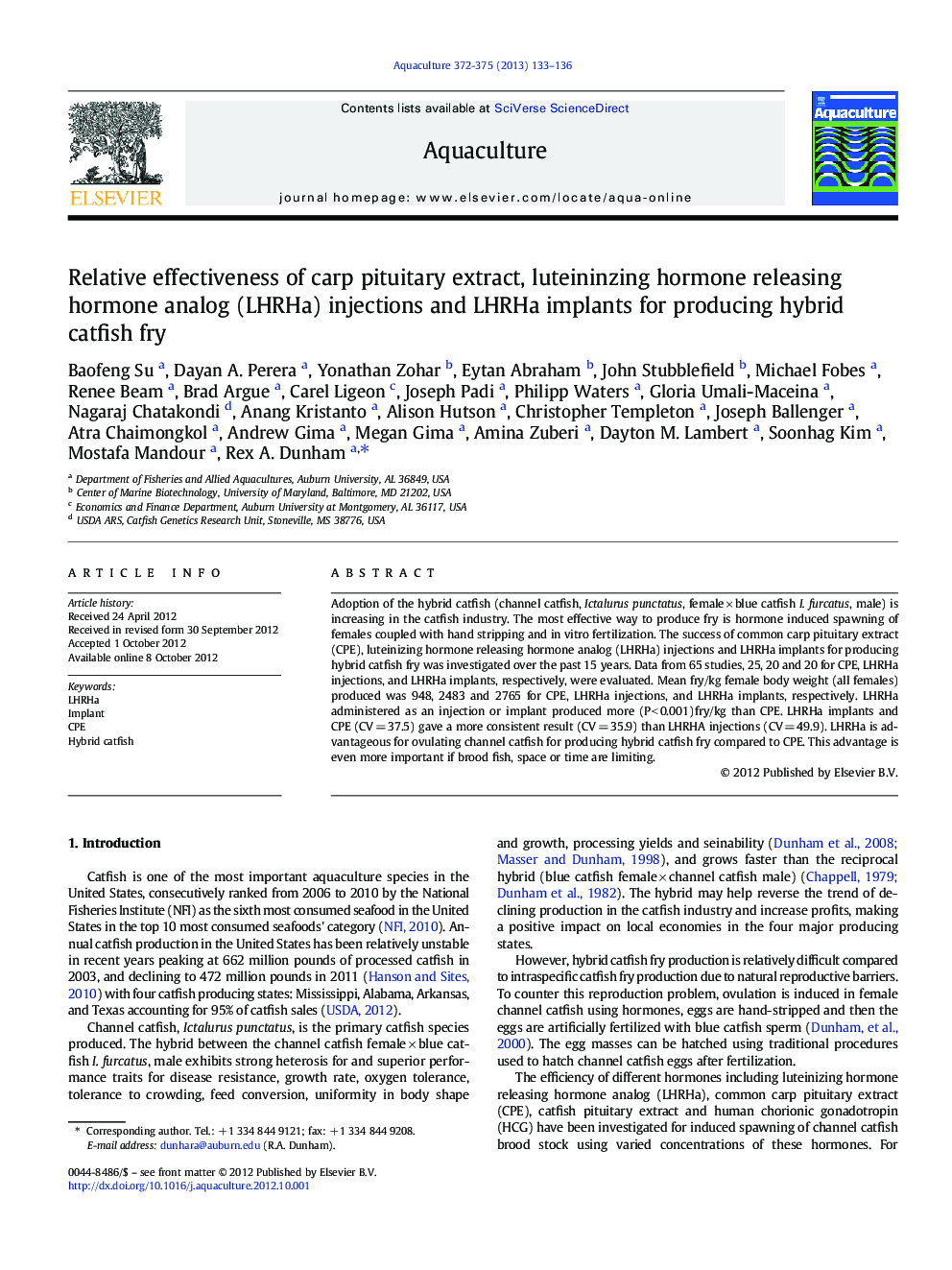| Article ID | Journal | Published Year | Pages | File Type |
|---|---|---|---|---|
| 2422290 | Aquaculture | 2013 | 4 Pages |
Adoption of the hybrid catfish (channel catfish, Ictalurus punctatus, female × blue catfish I. furcatus, male) is increasing in the catfish industry. The most effective way to produce fry is hormone induced spawning of females coupled with hand stripping and in vitro fertilization. The success of common carp pituitary extract (CPE), luteinizing hormone releasing hormone analog (LHRHa) injections and LHRHa implants for producing hybrid catfish fry was investigated over the past 15 years. Data from 65 studies, 25, 20 and 20 for CPE, LHRHa injections, and LHRHa implants, respectively, were evaluated. Mean fry/kg female body weight (all females) produced was 948, 2483 and 2765 for CPE, LHRHa injections, and LHRHa implants, respectively. LHRHa administered as an injection or implant produced more (P < 0.001) fry/kg than CPE. LHRHa implants and CPE (CV = 37.5) gave a more consistent result (CV = 35.9) than LHRHA injections (CV = 49.9). LHRHa is advantageous for ovulating channel catfish for producing hybrid catfish fry compared to CPE. This advantage is even more important if brood fish, space or time are limiting.
► LHRHa and CPE were compared for production of hybrid catfish fry. ► LHRHa injections or implants produced more hybrid fry/kg than CPE injections. ► LHRHa implants and CPE gave a more consistent result than LHRHA injections. ► LHRHa implants require less handling and labor, and likely produce less stress.
